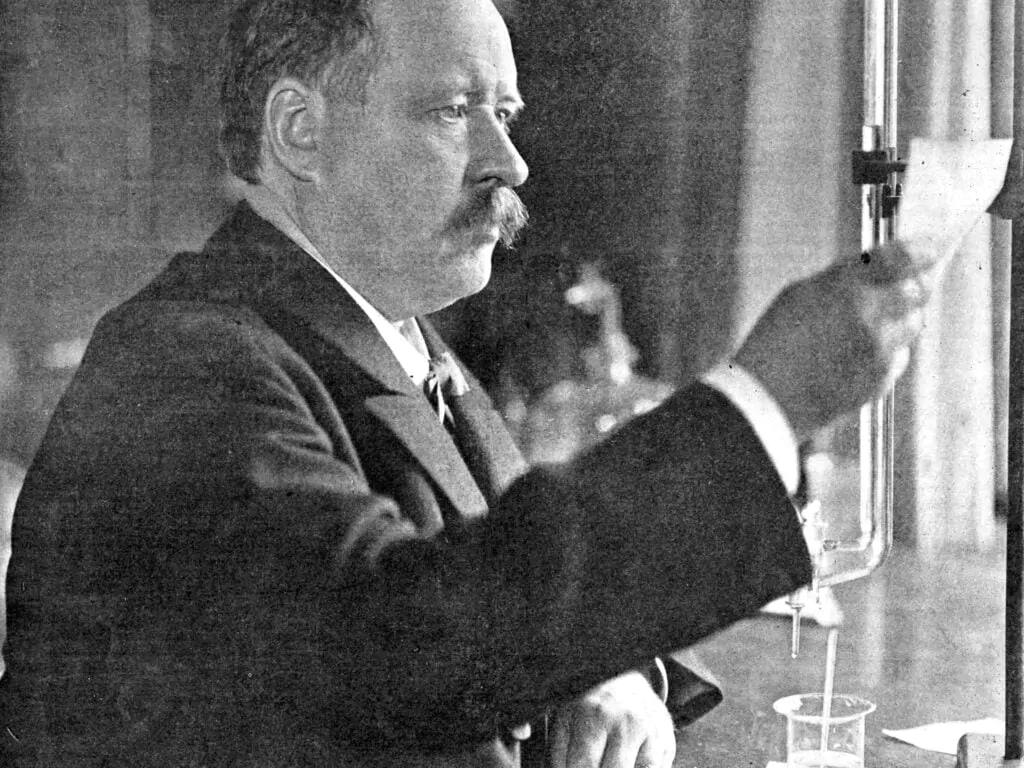Long before the current political squabble over climate change, even before the unification of Italy and the first American Civil War, a scientist called Eunice Foote documented the scientific causes that would form the basis of the current crisis.
The year was 1856
Eunice Foote's short scientific article was the first to describe the extraordinary power of CO2 to absorb heat, the driving force behind global warming. in 1856 the idea that the atmosphere retained heat was known, but the cause was not known. The scientist arrived at that with her study.
CO2 explained in 20 seconds
Carbon dioxide is an odorless, tasteless, and clear gas that forms when people burn fuels, including coal, oil, gasoline, and wood. As the Earth's surface warms, you might think the heat will radiate back into space. But it's not that simple. The atmosphere remains warmer than expected mainly due to greenhouse gases such as carbon dioxide, methane, and atmospheric water vapor, all of which absorb the outgoing heat. They are called “greenhouse gases” because, just like glass in a greenhouse, they trap heat in the Earth's atmosphere and radiate it to the planet's surface, producing vast climate changes.
Eunice Foote's study

Foote conducted a simple experiment. She inserted a thermometer into each of two glass cylinders, pumped carbon dioxide into one and air into the other, and then placed the cylinders in the sun. The cylinder with carbon dioxide became much hotter than the one with air, and the scientist realized that carbon dioxide would strongly absorb the heat in the atmosphere.
Foote's discovery of the high heat absorption of the gas carbon dioxide led her to conclude that
If a greater proportion of carbon dioxide is mixed into the air than is currently the case, an increase in temperature will occur.
A few years later
in 1861, six years later, also the well-known Irish scientist John Tyndall he measured the heat absorption of CO2 and was so surprised that something “so transparent to light” could absorb heat so strongly. He did hundreds of experiments. And he too recognized possible climate changes, not only caused by carbon dioxide, but also by methane.

The timing of the forecast should not be surprising, but rather its nature. By 1800, human activities were already dramatically increasing carbon dioxide in the atmosphere. Burning more and more fossil fuels, coal and eventually oil and gas, then added an ever-increasing amount of carbon dioxide to the air.
The first estimates

The first revealing experiments on the nature of CO2 were followed by quantitative estimates of climate change. And the twentieth century had not even begun. The first ever was the work of Svante Arrhenius, Swedish scientist and Nobel laureate. in 1896 calculation:
Temperatures in the Arctic regions would rise by 8 or 9 degrees Celsius if carbon dioxide increased to 2,5 to 3 times its current level
Arrhenius's estimate was even conservative: since 1900 atmospheric carbon dioxide has increased from about 300 parts per million to about 417 ppm due to human activities, and the Arctic has already warmed by about 3,8 C (6,8 F).
in 1901 he added Nils Ekholm, Swedish meteorologist.
The present burning of coal is so great that if it continues it will undoubtedly cause a very noticeable increase in the average temperature of the earth.
All of this was understood well over a century ago.
Initially, scientists thought that a possible small increase in Earth's temperature might be a boon, but they could not predict subsequent huge increases in fossil fuel use. in 1937, the English engineer Guy Calendardar documented how rising temperatures correlated with rising CO2 levels.
Thanks to the burning of fuel, humans have added about 150.000 million tons of carbon dioxide to the air over the last half century, and global temperatures have actually risen.”
Guy Calendardar, 1937

Warning signs on climate change
Since 1958, observations made on the Hawaiian Islands have even shown variations in CO2 concentrations in correspondence with the rise and fall of the seasons.
in 1965, a scientific team US President Lyndon Johnson warned of the growing risk of climate change, thus concluding:
Man is unwittingly conducting a vast geophysical experiment. Within a few generations it is burning the fossil fuels that have slowly accumulated in the earth over the last 500 million years. We will see higher temperatures, melting ice caps, rising sea levels and acidification of ocean waters.
Since then, another half century. More ice has melted, sea levels have risen and acidification due to CO2 has also become a critical problem for ocean organisms.
Someone continued to sleep

Observations of Hawaii since 1958 show the rise and fall of seasons as concentrations increase.
Credit: Scripps Institution of Oceanography
Scientific research has over time strengthened the conclusion that human-generated emissions from the burning of fossil fuels are causing dangerous climate warming and a variety of harmful effects. Politicians, however, have been dramatically slow to respond on climate change. Some have followed the same approach as the hydrocarbon companies: they have denied and questioned the truth. Still others have embraced the “wait and see” philosophy, despite overwhelming evidence.
Today, reality is rapidly surpassing scientific models. Mega droughts, heat waves and massive fires, heavy and relentless rains - all precursors of increasing climate destruction.
In summary: the world has known for more than a century the risk of warming represented by excessive levels of CO2. He has known this risk since before cars and coal-fired power plants were invented! A scientist, one of the very few of her time, warned us 165 years ago.



